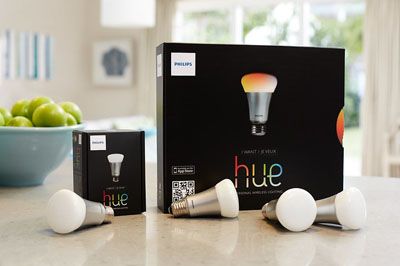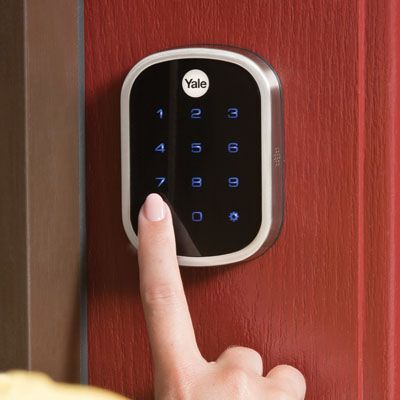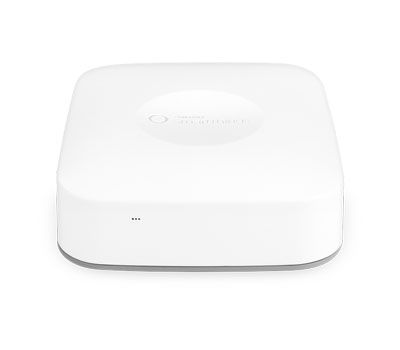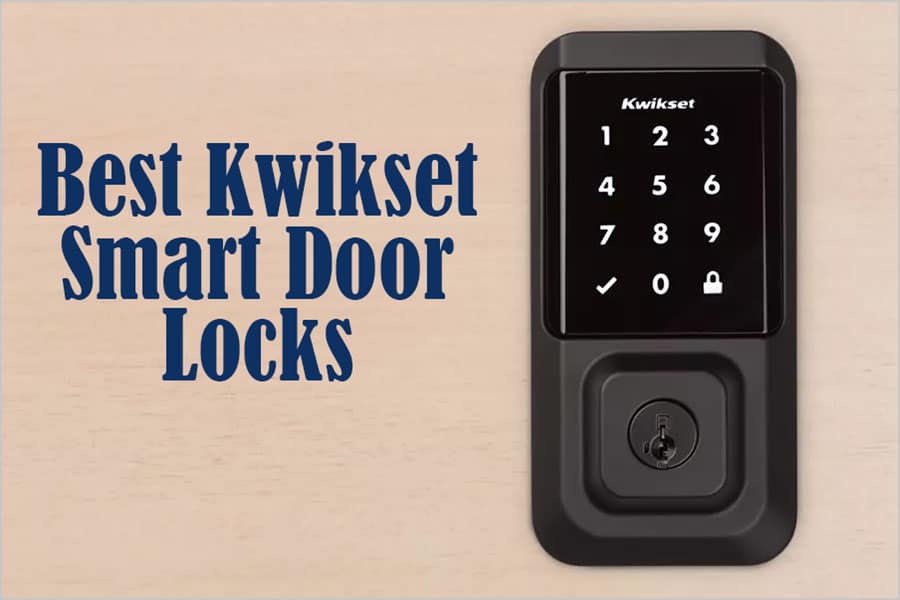Zigbee Explained: What It Is and How It Works
AUTHOR: Carlos ParasUPDATED: November 20, 2024
Zigbee is one of the many ways to connect smart home devices over a wireless network. In this article, I’ll explain how Zigbee works and why it is useful in the world of home automation.
What is Zigbee? Zigbee is a low-power wireless communication protocol built upon the IEEE 802.15.4 standard for low-rate personal area networks (LR-WPAN). It is considered to be a more energy-efficient and cost-effective alternative to traditional Bluetooth and Wi-Fi technologies.
The Zigbee specification has been around for over 15 years. It is most commonly used in homes and buildings to wirelessly connect automation and security devices to the internet.
Devices such as smart thermostats, smart light switches, and smart locks can all be linked in a wireless network which can be managed on a smartphone or computer interface.
Zigbee is also used in other applications such as health care, smart energy, remote controls, and retail services.
Smart Home Deals @ AmazonThe Zigbee Mesh Network

What differentiates Zigbee from other communication protocols is that data transfer isn’t solely point-to-point between two high-powered devices. Instead, Zigbee devices operate as a mesh network which can provide more reliability to its users.
What is a mesh network? A mesh network is a local network topology where the devices in its infrastructure are interconnected to one another.
All of the devices in a mesh network work together to efficiently transfer data to or from other devices.
The three most common examples of mesh networks are LAN (local area network), VLAN (virtual LAN), or WLAN (wireless LAN). One decentralized connection is employed, whether it’s a partial mesh topology or a full mesh topology.
In a partial mesh topology, some devices are connected to every device in the network, while other devices are connected only to the devices they exchange information with.
A full mesh topology, like the one that Zigbee uses, is where each device is connected to every other device in the network.
In a Zigbee network, devices transmit signals within a short distance (10 to 100 meters), but because Zigbee utilizes a mesh network, each device acts as a repeater and can extend the communication range.
In addition, mesh networks are “self-healing”, which means if one device fails to carry and deliver a signal, another device in the network can pick up the signal and continue to send it along to the targeted device.
Zigbee Interoperability
All Zigbee-enabled devices are interoperable. This means that even if devices are made by different manufacturers, interconnectivity can be achieved between them.
For example, let’s say you have a smart light switch made by one manufacturer and a smart light bulb made by another manufacturer. If both devices are Zigbee-enabled, they will able to communicate with each other and the light switch will be able to turn the light bulb on or off.
On the other hand, if only one of the devices is Zigbee-enabled, the devices will not be able to communicate or work with one another.
How Does Zigbee Work?

Image Courtesy of: Philips
Smart home devices are equipped with tiny radio transmitters which allow for wireless connectivity. These transmitters send and receive data through a personal network which only you have access to.
Zigbee uses three device types to make network interconnectivity and communication possible: the Zigbee Coordinator (ZC), Zigbee Router (ZR), and Zigbee End Device (ZED).
Zigbee Coordinator
The Zigbee Coordinator establishes the base (or root) of the network. Each network must have one (and only one) Zigbee Coordinator which manages network functions and stores network information.
The Coordinator establishes the network by choosing which channel to use for network communication.
The Coordinator also serves as the Trust Center for the network by managing and distributing security keys. This process allows other devices to join or leave the network. A Zigbee coordinator must be powered all the time and cannot sleep.
Zigbee Router
The Zigbee Router allows application functions to run. It serves as an intermediate router between other devices that are sharing or exchanging information. It can send, receive, and route information within its own network or between other existing networks.
It is also able to give permission to other routers and end devices to join the network. A Zigbee Router cannot sleep and must be powered all the time.
Zigbee End Device
The Zigbee End Device can only communicate with a Zigbee Router or the Zigbee Coordinator. It is the most basic device type in a Zigbee network. It can only send or receive information and is usually battery powered.
An end device can’t route information along to other devices and therefore doesn’t require a lot of memory. It also can’t allow other devices to join the network.
Zigbee End Devices are not used frequently, allowing them to sleep for a long period of time, which prolongs battery life.
Zigbee Radio Bands

Image Courtesy of: Yale
Zigbee operates on ISM radio frequency bands. The acronym ISM stands for “industrial, scientific, and medical.” Any person or company can utilize radio frequency energy in these bands for purposes related to industrial, scientific, or medical activities.
ISM bands are not intended to be used for telecommunication purposes. For the most part, ISM radio bands are used for low-power wireless communication systems such as Zigbee, Bluetooth, Wi-Fi, and RFID (radio frequency identification).
ISM radio bands are also used for radio-frequency heating (which is how microwave ovens cook food) and medical diathermy machines.
Zigbee communication has very low latency, which means data transmission happens quickly without much of a delay. Every Zigbee-enabled device has a special Zigbee chip integrated into them.
Each chip contains microcontrollers and radios which allow the devices to communicate with each other.
Zigbee operates on the 2.4 GHz ISM band in most locations worldwide. Though there are other locations where Zigbee can operate on lower frequencies.
For example, in China, you can use the 784 MHz band for Zigbee, and in Europe, you can use the 868 MHz band. In Australia and the United States, you can use the 915 MHz band.
While Zigbee is able to operate on multiple frequency bands, it’s typically used in the 2.4 GHz band.
The 2.4 GHz band can have data transfer rates as high as 250 kilobytes per second. The 868 MHz band has a data rate of 20 kilobytes per second. And the 915 MHz band has a data rate of 40 kilobytes per second.
Zigbee History and The Zigbee Alliance
The 1990’s was a major decade for the innovation of wireless communication technology. Bluetooth emerged in 1994 and Wi-Fi in 1997, while Zigbee was developed in 1998.
In 2002, several technology-based companies joined together to establish the Zigbee Alliance. Their purpose is to manage the Zigbee standard, promote its usage, and distribute application profiles for other companies to use in their technology products.
These profiles allow different manufacturers to produce Zigbee-enabled products which will be able to work together and share information with other Zigbee-enabled products.
There are three membership levels of the Zigbee Alliance: the Adopter level, the Participant level, and the Promotor level.
The Adopter level gives members the right to access completed Zigbee standards and specifications. Adopter members include ARC Technology Company Limited, Emporia Energy, Verizon, SmartPlus Inc., AXIS Labs Inc., Catapult Technologies, and Carrier.
The Participant level gives members the right to vote and influence future Zigbee developments. They are also entitled early access to product development standards and specifications.
Participant members include V-Mark Universal Electronics, Toshiba, Telink Semiconductor, Data Communications Company, Samsung, Bosch, Lowe’s, IKEA, and Spectrum.
The Promoter level has final approval over all standards. They are part of the board of directors of Zigbee Alliance, and they give automatic voting rights to each workgroup.
The biggest Promotor members include Amazon, Comcast, Huawei, MMB Networks, NXP, Legrand, and Texas Instruments.
Since its formation, the Zigbee Alliance has expanded to over 400 different organizations in 37 countries around the world.
Zigbee standardization took place in 2003, and the ratification of the IEEE 802.15.4 specification took place in 2004. The following year, public availability of the Zigbee specification was announced on June 13th, 2005.
Zigbee Security

Image Courtesy of: SmartThings
Zigbee utilizes AES 128-bit encryption and is built upon the security model defined in the IEEE 802.15.4 standard. Zigbee networks and devices use two types of security keys to communicate: a network key and a link key.
Network Key
A network key is shared and used by all devices in the network to securely transfer messages. It is generated by the Trust Center (which most often is the coordinator in the network) and is sent to all new devices joining the network.
Link Key
A network key is never sent to devices unencrypted. The Trust Center is pre-configured with a link key that is used to protect the network key when it is being transmitted to joining devices.
Link keys are also used for encrypted communication between two devices. These unique link keys are shared only between the two devices and are generated and provided by the Trust Center.
Zigbee Security Models
Zigbee offers two types of security models: distributed and centralized. These two models differ in the way they allow new devices to join the network and how they secure communication throughout the network.
Distributed Security Model
A distributed security model is a simple, but less-secure type of system. It is made up of two device types, routers and end devices. When a router is powered on, it can form a distributed security network if it doesn’t detect an existing network.
In this type of network, any router can allow other routers and end devices to join by issuing the network key. All devices in a distributed security network use the same network key for encrypting messages.
In order to join the network, routers and devices must have a pre-configured link key. This link key is used to encrypt the network key when passing it to newly joined devices.
Centralized Security Model
A centralized security model provides a higher level of security which makes the system a bit more complicated. In addition to routers and end devices, this model includes a third device type: the network coordinator or Trust Center.
The Trust Center forms a centralized security network by configuring and authenticating devices that join the network. It generates the network key that each device will use for encrypting messages throughout the network. This network key can be refreshed periodically (either automatically or on demand) to reduce the risk of hacking.
The Trust Center also distributes a unique Trust Center Link Key to devices as they join the network. This link key is used by devices to securely communicate with the Trust Center.
Zigbee Benefits
To sum it all up, Zigbee offers a low-cost, low-power, highly reliable, and secure way to connect devices wirelessly over the internet. With hundreds of Zigbee smart home devices available, it’s no wonder why Zigbee is so popular and so widely used.
Recommended Products
- Premium sound – Rich, detailed sound that automatically adapts to any room. Supports lossless HD audio available on select...
- Voice control your music – Stream songs from Amazon Music, Apple Music, Spotify, SiriusXM, and more. HD requires a...
- Smart home hub – Built-in hub to voice control compatible lights, locks, and sensors. Easily set up compatible Zigbee and...
- Alexa is ready to help – Set timers, reminders, and alarms. Alexa answers questions like "Alexa, what time is it?"
- Start your routines with motion – Turn on compatible lights, play your Flash Briefing, or turn on the coffee maker when you...
No products found.
- Alexa can show you even more - With a 10.1" HD screen that’s designed to move with you, video calls, recipes, and shows are...
- Stay in frame - Video call friends and family or take a picture while the 13 MP camera with auto-framing and motion keeps you...
- Smart home made simple - Set up compatible Zigbee and Matter devices without a separate hub. Ask Alexa to show you security...
- Take a look around when you’re away - Securely access the built-in camera to remotely monitor your home anytime with the...
- So much entertainment - Ask Alexa to play your favorite shows, music, and podcasts from Prime Video, Netflix, Amazon Music,...
No products found.
- Monitor and control compatible devices in your home using a single smartphone app for your phone
- Automate connected devices in your home and set them to turn on or off when doors are opened, people come and go, and much...
- Works with a wide range of smartphone compatible products
- VOICE CONTROL: Works with Alexa and Google Assistant (devices sold separately)
- CONNECT ALL YOUR SMART DEVICES: Easily connect and manage your smart home ecosystem with Wink Hub 2. Compatible with all...
- ONE SIMPLE APP: Control all your home’s smart devices, no matter where you may be, using the Wink app on your smartphone....
- ULTIMATE COMPATIBILITY: Wink Hub 2 enables you to connect and control 400+ smart home devices, including those made by Nest,...
- THE LARGEST PROTOCOL SUPPORT: Wink Hub 2 supports Bluetooth LE, ZigBee, Z-Wave, Kidde, and Lutron Clear Connect. Works with...
- WHAT’S IN THE BOX - Includes two White and Color Ambiance smart 60W-equivalent A19 color-changing light bulb; Perfect for...
- UNLOCK THE FULL POWER OF HUE - Add a Hue Bridge to enjoy automations, control from anywhere in the world, and a secure,...
- MILLIONS OF COLORS - The White & Color Ambiance range offers both warm-to-cool white and millions of colors straight out of...
- ENJOY PRESET SCENES - Light your routines throughout the day; Set a 24-hour natural light scene that mimics the sun or choose...
- VOICE CONTROL - Convenient smart control; Set up voice control in the Hue app and use simple voice commands to control your...
- Unlock your door without keys by entering your code on the lock's backlit touchscreen keypad; Lock the door behind you with a...
- Lock and unlock your door from anywhere by adding the lock to a compatible Zigbee smart home or alarm system including...
- The lock is 100% key free meaning it's tamper proof and there's no keys to lose or copy.
- Don’t worry about getting locked out due to dead batteries - the lock has a back-up charger so you can give the lock power...
- Never hid a key again, create unique entry codes for the people you trust. Delete codes anytime you need to.
No products found.
No products found.






